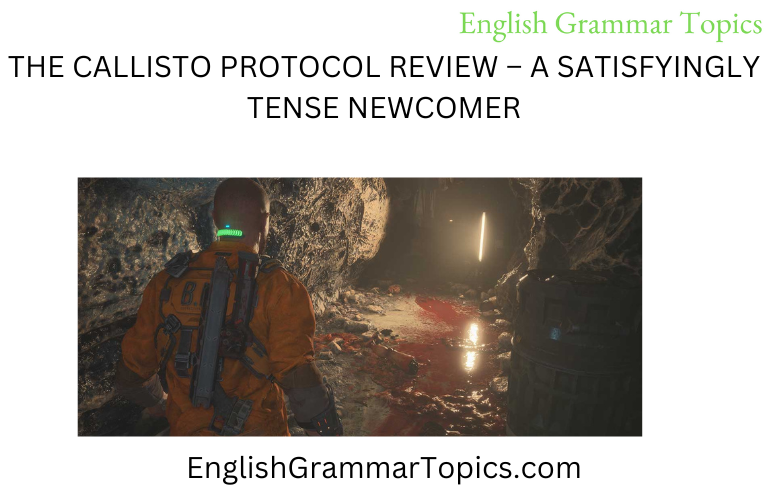The Callisto Protocol is a new game that is similar to Dead Space, which has long been a favourite of mine. It comes from the same creative team that created Dead Space, along with other excellent spiritual successors like The Evil Within, Bayonetta, and even Lost Odyssey.
After completing The Callisto Protocol, it became evident that the Dead Space DNA had been preserved but had undergone a complete mutation, much like the new Biophage menace.
You assume the character of Jacob Lee in the Callisto Protocol, a pilot of a freight transporter who works for the United Jupiter Company. His most recent task is straightforward but lucrative: transport a dangerous stuff between the moons of Jupiter, Europa and Callisto.
A terrorist organisation ambushes his ship, which causes it to crash and imprison him in a facility on Callisto. Naturally, Jacob realises he must go after being busted out of his cell after an outbreak of an unidentified illness while he is incarcerated.
Ironically, the story that follows is merely unexpected in that there are almost no surprises. Without a question, The Callisto Protocol wears its influences on its sleeve, yet it seems like a tremendous missed chance to manipulate and challenge players’ preconceptions regarding how the game develops.
Instead, The Callisto Protocol offers a science fiction tale that blatantly plagiarises the works that served as its inspiration (imagine Alien crossed with Dead Space), lacking the creative flare to properly identify it as its own.
The Callisto Protocol, however, does feel more realistic than Dead Space, thus anyone who found the enormous space-traveling bio-recombinant necromorphs repulsive would take comfort in the straightforwardness of The Callisto Protocol.

The game thus plays similarly to Dead Space, as you might imagine. Jacob makes his way through Callisto’s facilities in an effort to flee in this primarily linear, narrative-driven thriller.
However, The Callisto Protocol does a few things that you wouldn’t see in a Dead Space game in an effort to carve out its own niche, despite the fact that it is obviously influenced by Dead Space. It accomplishes this in a number of ways, including by handling combat and encounter design and delivering a more realistic story.
Combat in the Callisto Protocol is more about heavy hitting than dismemberment. You’ll interact with your adversaries more directly if you place more of an emphasis on melee. Due to the increased emphasis on melee combat, you are also given a tonne of manoeuvres to avoid and deflect the attacks of approaching adversaries.
This is accomplished by blocking an enemy’s attack by holding the stick back or to the left or right of the enemy. Even though the game claims that timing is not necessary, there have been instances where a good dodge resulted in me still getting damage. It’s a cool mechanism in use, and it feels great when you use it properly, but it could have been more reliable.
This fits in quite oddly with the fact that, despite the fighting having a lot of weight and being incredibly rewarding, things start to unravel when you’re under attack from multiple enemies.
There aren’t many ways to fight many foes at once, and Jacob can only block one strike at a time. A powerful melee attack can damage numerous adversaries, but it is impractical in the middle of a pile-on since it takes so long to wind up.
I’ll say it if you’re not interpreting the message well enough. Playing The Callisto Protocol is difficult. It’s tough in the majority of cases since you have to use your resources wisely when fighting your foes.
It can be difficult to the point of frustration in some circumstances, albeit this is a minority of my experience. Players will undoubtedly become frustrated by the battle system breaking down when dealing with multiple enemies and strikes that can instantly kill someone.
As a huge lover of horror games, I’m used to (and possibly even welcome) obstacles of this nature, but for some players, it will be more aggravating than enjoyable. Callisto can be a difficult game, but accessibility options like auto-dodge and lock-on targeting will undoubtedly ease some of these issues.
You have a limited arsenal of weapons at your disposal, including different versions of the standard pistol, shotgun, and assault rifle. You can easily complete the game with the gun you’re given at the beginning, thus none of the weapons really serve a purpose. Having such basic equipment feels like a squandered opportunity.
Nevertheless, the game’s gameplay does an excellent job of requiring you to switch between using weapons, melee, and your telekinetic ability (called GRP). I didn’t rely on one over the other at any point during the game. When you pummelled an opponent in melee, you draw attention to a place on the target that will take more damage if you shoot at it right away.
It’s an easy system that never becomes stale. The Callisto Protocol is built on a very robust fighting system that includes the ability to grasp and hurl enemies onto traps like spikes, fans, or revolving blades with your GRP.
